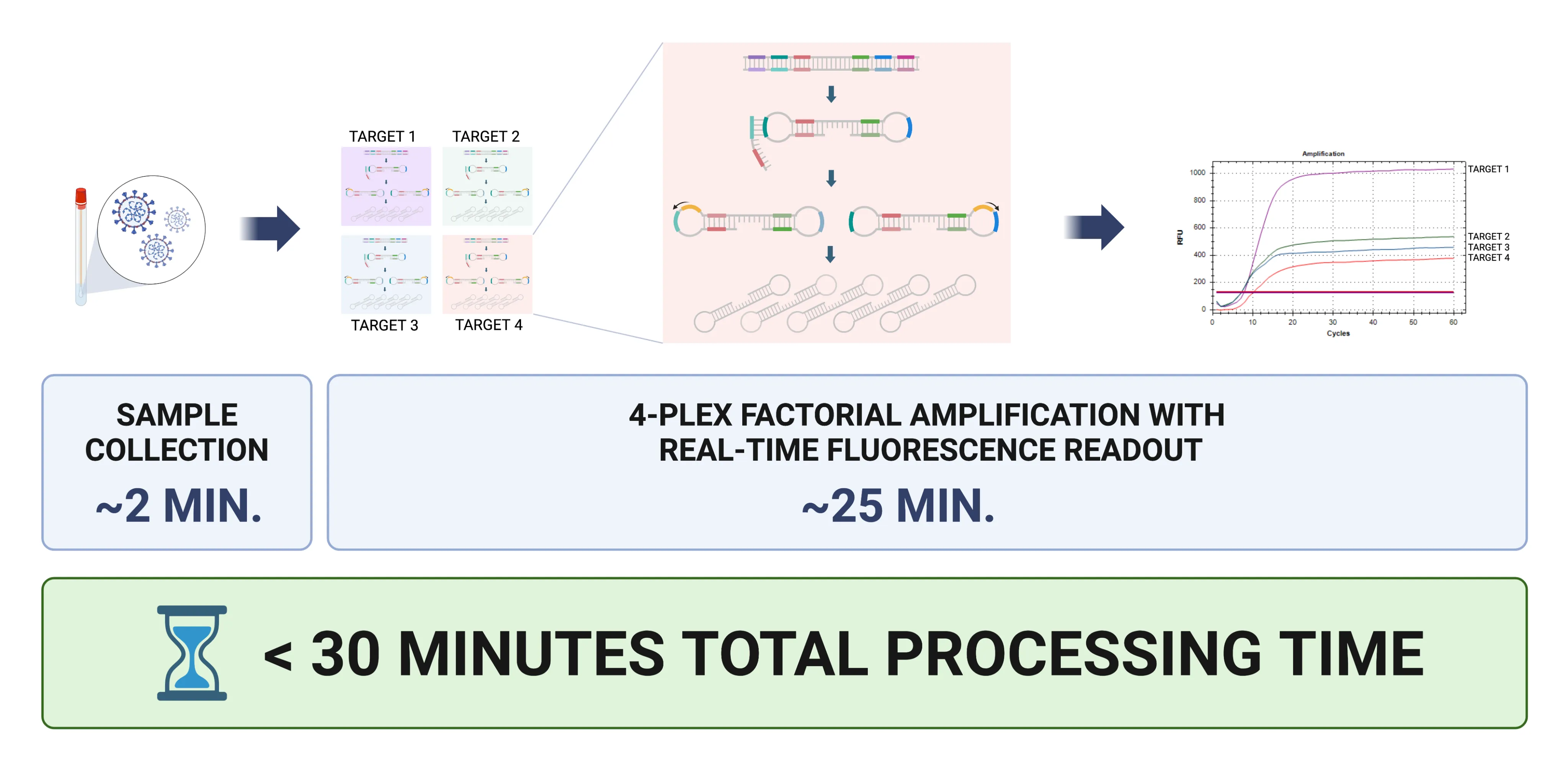MOLECULAR DIAGNOSTICS
Fast. Simple. Accurate.
Rapid, easy-to-use and portable diagnostic assays are critical to making point-of-care and field-based testing more accessible.
TORCH™ mLAMP. A Faster and Easier Way to Test at the Point-of-Care.
How Does TORCH mLAMP Work?
Highly Sensitive and Accurate Fluorescent Detection of up to 4 Targets

This is a TORCH mLAMP workflow for a quadruplex assay. Sample is collected and placed in a tube containing a lyophilized master mix. In most cases, no nucleic acid extraction is necessary.
Reaction mix is incubated at a constant temperature — a thermal cycler is not required. Factorial amplification occurs via 6 primers (colored bars) that bind uniquely to 6-8 distinct regions of the target.
Multiple rounds of strand displacement followed by primer annealing and polymerization form dumbell-like loop structures. These loop structures facilitate subsequent rounds of amplification producing very long (>20 kb) DNA concatamers with numerous repeats of the target sequence.
Amplification is factorial, producing detectable levels of amplified targets within 15-25 minutes. This occurs simultaneously for up to 4 targets in the same reaction. The entire process, from sample collection to results, takes less than 30 minutes and is all done on-site, at the point-of-care.



